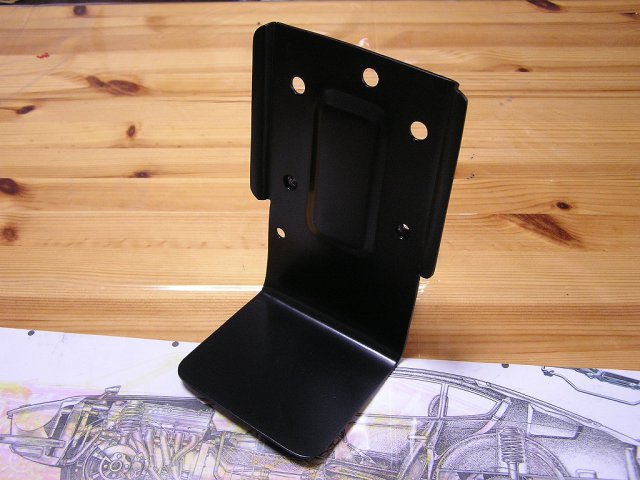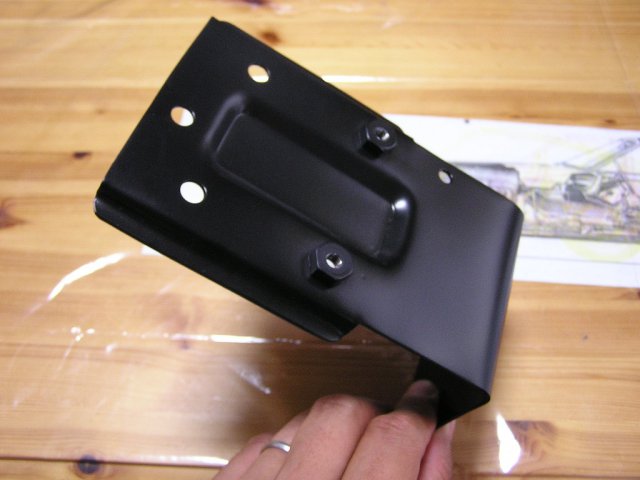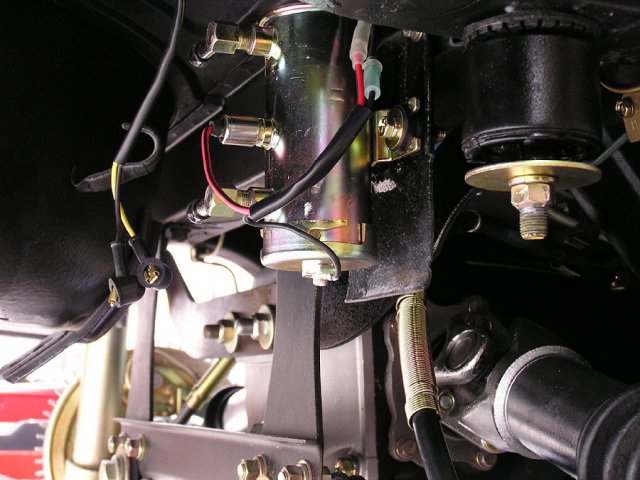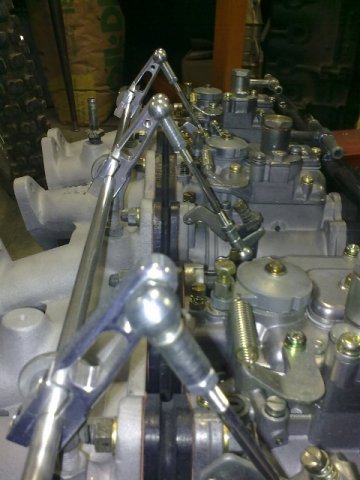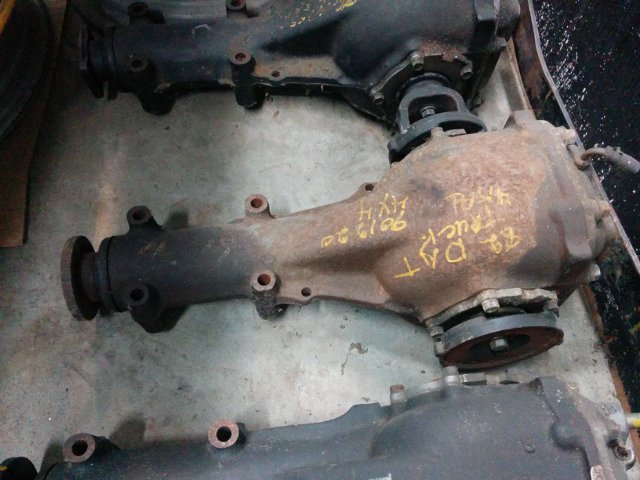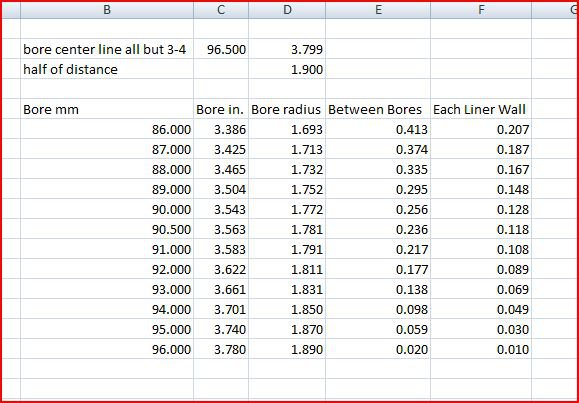-
Posts
470 -
Joined
-
Last visited
-
Days Won
6
Content Type
Profiles
Forums
Blogs
Events
Gallery
Downloads
Store
Everything posted by inline6
-
Awesome. Glad to help.
-
Yes, that would be helpful. I was planning on buying one soon so I could take measurements. I'm not sure how to go about lowering the engine as much as possible, thus the reason for the post. Dropping the engine means dropping the front of the transmission. I assume dropping the front of the transmission means dropping the back also (will need a custom transmission mount). My initial thought is to lower the engine 3/4" to compensate for the extra height of the LD28 block. That would put the header (and custom exhaust) back in the same location as it was with the L-28, and solve the hood clearance problem. But, while I'm here... I figure I need to explore the possibilities.
-
Anyone running a dry sump set up with an ARE pan? I'm looking into it and thinking about lowering the engine. I'm interested in lowering it by using custom or modified engine mounts. Curious if anyone has done this or something similar. Garrett
-
I saved these pics from somewhere online years ago. This guy was doing a very accurate/faithful restoration and had this bracket custom made to be like the original. I made a simple L shaped bracket and bolted it to this same location you see in the third picture (pic is not my car). There are two nuts already welded to inside the car frame that are there specifically for the fuel pump bracket. I made my bracket out of .100 thick mild steel. You'll want to make it longer than the height of the fuel pump so it can serve as a shield to keep road debris from bouncing up and hitting the pump, hooking on the pump, etc. You can find rubber grommets at auto stores that are the right size - I think I got mine from Advance Auto. Regarding wiring: I recall being able to find several people who wrote about it online, perhaps on this site. I remember reading about members who wired in auto "cut-off" switches of different types... so the pump turns off in an accident situation. You would be wise to so. On my 12/70 series one car, there is a factory connector "taped" to the wiring harness in the center of the dash with blue tape. If I recall correctly, you can get power to the pump (key position "on") by putting a fuse like this in place on that harness connector (thereby joining the two connections in the harness plug). On my car, that wiring goes to the electric fuel pump location in the rear of the car - I believe it shares the wiring for the tank sender unit. My pump was just like the one in the picture above, it only had one wire, and it was for the 12V power. My pump body had to be connected to ground for it to operate - again, like in the picture above.
-
Hi Rick, Thanks for the note. I have paid for one that will be shipped to me in a couple of days. I'll let you know if the deal falls through. Garrett
-
The google site specific search works in Google images also. So, if you are looking for pictures of something specific on hybridz... voila!
-

Any experience welding L6 head - how much warpage to expect?
inline6 replied to inline6's topic in Nissan L6 Forum
I typed this up for my engine builder via email, so I'll share it here also: There is a section of the Honsowetz book about bending heads: If a significant amount of welding is to be done or if only a little amount of material can be milled to straighten the head after welding, it is best to bend the head backward-up at the ends. After bending, the head gasket surface will be convex. This pre-bend will compensate for warpage that bends the head in the opposite direction (concave) that occurs when the combustion chambers are welded. The amount of preload or bend depends on the location and amount of heating or welding. Bolt the head upside down to the deck of the stripped block. Support the head off the block with a spacer block at its center. The spacer should span the width of the block, be approximately 1-in. wide, and at least 0.100-in. thick. Secure each end of the head to the block with two short head blots. Gradually tighten the bolts and check the bow in the head with a precision straightedge and feeler gauges. You'll need a 36-in. long straightedge for checking a six-cylinder head; 24-in. will do for a four cylinder head. With the straightedge flat against one end of the head, check the gap at the other end using your feeler gauges. How much prebend you should put in a head is subjective. It depends on how much welding will be done. This is something you and your welder must judge. Use the following as a guide: For small to significant amounts of welding, pre-bend 0.020-0.040 in. for a four cylinder head and 0.020-0.060 in. for a six cylinder head, respectively; 0.020 in. if there's a minimal amount of welding to be done and 0.040-0.060 in. if you're going to do a lot of welding. If you guessed right, your weld-repaired head will only show 0.005 - 0.008-in. warpage after it has cooled. Use your straightedge and feeler gauges to check. Whatever is required to clean up the head, the same amount must be milled from both sides. Welding Combustion Chambers to Increase Compression: As mentioned previously, the head must be absolutely clean before you can weld the combustion chambers. This applies to both old and new heads. Polish the chambers with cartridge rolls, then with a rotary brush. Bend the head backward the maximum amount because welding all combustion chambers is a significant amount of welding. Therefore, using my recommendations, a four cylinder head should be bent backward about 0.040 in and a six cylinder head about 0.060 in. Instruct the welder to "jump around," or weld a small amount in one area at a time. This will keep welding heat from being concentrated in one place, thus helping to reduce warpage and prevent cracking. Honsowetz also has a section on straightening heads. Basically, it consists of bolting the head upside down on an engine block and using a spacer and bolts as above. He says to tighten the bolts until the head is bent backward about 1.5 times the amount that it is warped. He again uses a straightedge and feeler gauges to set it up. Then he describes using a acetylene torch with a rosebud tip to evenly heat the entire head to 350F. He describes using temperature indicating crayon or paint and marking the head in many locations. It can take up to 30 minutes to heat the head to 350F this way. -

Any experience welding L6 head - how much warpage to expect?
inline6 replied to inline6's topic in Nissan L6 Forum
Awesome. Evidently, I haven't memorized everything from that book as I thought I had. Thanks for the info. -

Any experience welding L6 head - how much warpage to expect?
inline6 replied to inline6's topic in Nissan L6 Forum
Reason I am asking is we are thinking of pre-bending... before welding, so less straightening, or no straightening, if we get really lucky, will be necessary. -
bump - no one has robbed a crank from one of these engines and has a leftover block?
-
Were both of those aftermarket?
-
As a 16 year old, I used to get miffed when a shop wouldn't allow me to buy parts and have them install them. With lots more years behind me and the wisdom of traversing through them, I realize that only when it is possible to determine they are "white boxed" original suppliers to OEM, or high quality from proven track record, do I use them. Wrong metallurgy and or specs and aftermarket ball joints can wear out in 7000 miles for sure.
-
I was instructed by David Weber of Malvern Racing never to run the plastic spacers with o-rings. According to Dave, the carbs have to be "isolated" from vibrations to work properly. He told me to run rubber isolators. These use gaskets instead of o-rings. No leakage issues are another benefit. Here is a pic showing them between the carbs and the manifold:
-
I chased shimmy problems in my Z on and off for several years (shimmy was always there, but efforts to find it were "on and off" ). I replaced tires, wheels and tires, rebalanced several times, new compression rod bushings, new inner control arm bushings... I even rebuilt a good steering rack with all new factory parts including new inner and outer tie rod ends. Still had the problem. I even messed up said rebuilt rack because the rack gear and pinion wore at dead center because of the continued shimmy, before I found the problem. In the end, I replaced the only components that hadn't been replaced... the lower ball joints. I hadn't replaced them before then because they were the newest parts on the front end when I bought the car. And sure enough, they were the problem. They were aftermarket. Even though the boots were good and the outside of the joints looked fairly new, the joints had worn. I put new OEM joints on and haven't had a shimmy since. And by the way - for some reason that speed range ~45 is tell tale. If your shimmy goes away again at 50 or 55 and you are smooth above that - I would suspect the ball joints big time. G
-
I'll let you conclude things with abdi first. If that should fall through, I have what you are looking for. Diff is indeed a 4.38 with K on the top of the case.
-
bump
-
Pretty sure I have one. Got it from an import salvage yard - pretty sure it was from the front of a Nissan pickup. I'll snap some pics and get back to you.
-

Anyone know of a running 3.35L LD28 (gas powered)?
inline6 replied to inline6's topic in Nissan L6 Forum
My bad - I recalled the wrong info from my spreadsheet. You'd have to bump the bore to 91 to get to 3.512 liters, which may be possible (with ductile iron liners). I think 90 is more doable, when looking at bore spacing info: -

Anyone know of a running 3.35L LD28 (gas powered)?
inline6 replied to inline6's topic in Nissan L6 Forum
These are the exact specs I have been investigating as of late - with 6" rods. Ends up being a 3.5L. Though, we are thinking of having custom liners (press fit) with o-rings made - the LD28 block will be machined to fit. As a next step, either an LD28 block, if I can find one near my engine builder, or my "holed" N42 will get some test machining... I may still have to go with a standard deck height engine, but at least I have a good N42 that will take 89 mm bore (possibly a 90 mm also) without issues on hand. Rod gets much shorter if I have to go that route. Billet crank will be procured regardless of final direction. -
Let me know if you have one and obviously what you want for it. Need it shipped to Danville VA Thanks for your help. Garrett
-

Anyone know of a running 3.35L LD28 (gas powered)?
inline6 replied to inline6's topic in Nissan L6 Forum
Why braze and stress relieve? How about just machining out the bores completely... and installing custom liners as is done in a lot of modern aluminum blocks? But also keeping the closed deck? -

Anyone know of a running 3.35L LD28 (gas powered)?
inline6 replied to inline6's topic in Nissan L6 Forum
Awesome amount of work (and money) you've got in that car of yours - I looked through a bunch of your pictures. Very nice! What kind of transmission are you running? With the standard deck height, I'm guessing you have about a 5.4 inch rod. The bore on the dyno sheet is listed at 3.5" (89 mm). So the stroke has to be 90 mm to get 3.359 L. Still looking for anyone out there with an LD28 "tall block" with similar bore and stroke but with a 6" rod... -

Anyone know of a running 3.35L LD28 (gas powered)?
inline6 replied to inline6's topic in Nissan L6 Forum
The engine Les' built for the green hornet car utilized an N42 block. That is my assumption based what I gather from searching the forums, yes. The LD28 block has gaps for coolant to pass between all bores. That bit of info, and comments about several sonic tests seem to make the case that the cyl. walls do not share the same OD as the N42 or F54 blocks. -

Anyone know of a running 3.35L LD28 (gas powered)?
inline6 replied to inline6's topic in Nissan L6 Forum
Sorry, typo'd the title - meant to say 3.35L. This Rebello video makes reference to a "tall deck" block/engine. The stock V07 crankshaft per Dave is "with a shorter stroke" than the Brian Crower crankshaft... And the longer of the two rods in the video is about a 6 inch rod. The block is likely an LD28. So, from the various comments in the video, it appears the engine being built was a 3.35L, with a 6" rod and a custom billet crankshaft with a stroke longer than 83 mm. So, who has one of these?

